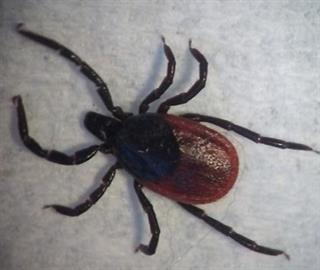| | | Tick Identification and Lyme Disease Testing
Tick identification and testing for the presence of Borrelia burgdorferi is a service available to the public. To use this service, you will need to submit the tick either at a drop-off location or by mail along with a requisition form and payment. The links below provide instructions on submission. Refer to the options menu for drop-off locations.
Tick Testing Requisition Form & Information
1. Requisition Form: Tick ID and Lyme Disease Testing
Requisition Form: En Español (Identificacion De Garrapata)
2. Tick Removal and Collection Information
3. Tick FAQs (2/19/25)
4. Information on the IFA test for Lyme Disease
5. Tick Testing Interpretation Information
6. Background and Additional Information
Note:
A. The laboratory only tests Ixodes species ticks for the bacterium that causes Lyme disease, because these are the only ticks that can infect a host with Borrelia burgdorferi upon blood-feeding.
B. The laboratory will identify but does not test Dermacentor species ticks for Lyme disease. Scientific studies have shown that Dermacentor species ticks are not competent vectors for transmitting Lyme disease.
C. The laboratory does not test ticks for other tick-borne diseases. If you are interested in having a tick tested for other tick-borne diseases, please submit to another facility. Ticks submitted to the laboratory will not be suitable for additional testing.
Online Tick Payments
The link below can be used to make online payments for tick testing submissions. Please ensure that the receipt number is written clearly on the requisition as proof of payment.
Tick Payment Portal
 _1.jpg)
1. Adult female, Ixodes species tick (can transmit Lyme disease). 2. Adult male, Dermacentor species tick. |
| | | |